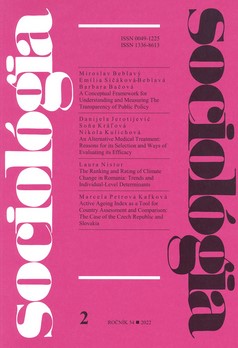The Role of Residence Location in the Spatio-Temporal Walking Patterns of Adolescents: A Case Study in the Post-Socialist Town of Banská Bystrica (Central Slovakia)
The Role of Residence Location in the Spatio-Temporal Walking Patterns of Adolescents: A Case Study in the Post-Socialist Town of Banská Bystrica (Central Slovakia)
Author(s): Katarina RišováSubject(s): Social development, Social Theory, Demography and human biology
Published by: Sociologický ústav - Slovenská akadémia vied
Keywords: Walking patterns; adolescents; residential location; spatio-temporal constraints; Slovakia;
Summary/Abstract: Most walking-related research focuses on the spatial behaviour of the adults living in the studied areas and omits other pedestrians. The aim of this study was to uncover possible differences in the spatio-temporal patterns of adolescents’ walking activities, according to the location of their residence. The research was carried out in an electoral ward in the post-socialist town of Banská Bystrica (Central Slovakia). A total of 295 participants aged 13 to 16 years (103 of whom were residents of the ward) recorded their walking activity at hourly intervals. The residents of the ward were only more active than other pedestrians during a few afternoon and evening periods, with differences up to 13:00 not being significant at all. The lowest dispersion of walking activity space was recorded for participants residing other municipalities. The lesser walking activity by non-residents is in line with current knowledge of the spatio-temporal constraints of commuting individuals, and the time-budget theory.
Journal: Sociológia - Slovak Sociological Review
- Issue Year: 54/2022
- Issue No: 4
- Page Range: 352-375
- Page Count: 24
- Language: English

